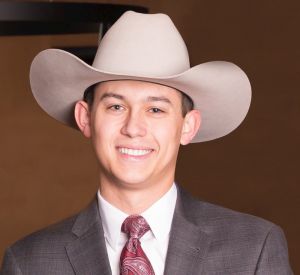A just-announced Bureau of Land Management effort to revise grazing regulations is already sparking sharp disagreements between ranching supporters, who welcome it as common-sense reform, and opponents, who say BLM is favoring the needs of cattle over the environment.
In Tuesday’s Federal Register, BLM issued a Notice of Intent (NOI) to prepare an Environmental Impact Statement on potential changes to grazing regulations on about 155 million acres of BLM land.
Among the bureau’s goals are more efficient permitting of grazing operations and more clarity in BLM regulations. A 2006 effort to rewrite grazing regs did not survive a court challenge in Idaho and the 9th Circuit Court of Appeals, meaning the current grazing rules have been in place since 1995.
However “Despite the injunction, the 2006 amended version of the grazing administration regulations still appears in the [Code of Federal Regulations],” BLM said in its NOI. “This has created significant confusion for grazing permittees and lessees, BLM staff, the public, and the courts.”
Tanner Beymer, associate director of the Public Lands Council and associate director of government affairs for the National Cattlemen’s Beef Association, agreed, and said to efforts by the Trump Administration to alter the way the National Environmental Policy Act and Endangered Species Act are implemented are other examples of “common sense” regulatory solutions.

Tanner Beymer
“This is a once-in-a-generation opportunity for BLM permittees to set the record straight,” said Dr. J.J. Goicoechea, who chairs the NCBA Federal Lands Committee and PLC’s Grazing Regulations Working Group. He said he could not emphasize enough the importance of ranchers commenting on the scope of the EIS.
But grazing critics — and frequent litigants — the Western Watersheds Project (WWP) and WildEarth Guardians said the NOI shows clearly where BLM is going with its rewrite: less public participation, for example, and the use of grazing as a wildfire-reduction tool.
Interested in more coverage and insights? Receive a free month of Agri-Pulse or Agri-Pulse West by clicking here.
Greta Anderson, deputy director of WWP, said BLM’s emphasis in the Federal Register on improving efficiency and ensuring “adequate,” but not “full” participation by the public so as not to “unduly burden” the administrative process, suggests that BLM “is somehow burdened by public participation.”
The notice also suggests an expanded use of Categorical Exclusions under NEPA, which define activities that do not need environmental review, and streamlining the protest process.
Beymer, however, said, “I don’t see anything in the NOI that says the public is going to be cut out of the process.” As for Categorical Exclusions, he added that while public opportunities to comment “are not the same, that’s not to say that the public doesn’t get to weigh in at other junctures.”
Perhaps the most controversial proposal scientifically is BLM’s apparent desire to use grazing as a way of reducing the risk of wildfire. There is a wide divide on that subject. Beymer says there’s a “wealth of data that grazing is a good wildfire reduction tool.”
But Judi Brawer, WildEarth Guardians’ Wild Places Program Director, said, “Saying that grazing reduces fire risk — there is in my experience no evidence of that.”
Authors of a recent U.S. Geological Survey paper, accepted for publication by the journal Biological Invasions, said their data “provide no support for the notion that contemporary grazing regimes or grazing in conjunction with fire can suppress cheatgrass.” Brawer said the study's conclusions are in line with previous research.
Beymer, however, said he has spoken with researchers who have told him the study “is not worth the paper it’s printed on.” He said he expected NCBA and Public Lands Council to have a response to the paper within about three weeks.
The comment period on the NOI ends 15 days after the last scoping meeting.
Those scoping meetings are scheduled for:
- Feb 6 — Miles City, Montana at the Sleep Inn and Suites
- Feb 11 — Las Cruces, New Mexico at the Ramada Palms Hotel
- Feb 18 — Elko, Nevada at the Elko Convention Center
- Feb 20 — Casper, Wyoming at the Casper Event Center
For more news, go to: www.Agri-Pulse.com


